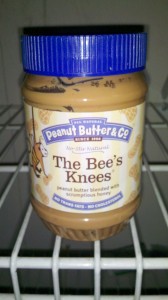Along with most of the modern world, I, too, took it upon myself to create a New Year’s Resolution for 2012. OK – so I am also somewhat of an overachiever, so I actually have two. First, decluttering my house, in bite size chunks, became one of my missions for 2012. So much so I found a calendar with daily (except for Sundays) decluttering projects to guide me, encourage me, and hold me accountable. [Note: I found the calendar via Pinterest.] My first HUGE project (I did say bite size, but…) was weeding the pantry. First step was to assess what exactly was in the pantry – best way to do this? Remove all items from said pantry. This was the scene in my kitchen:
It only made sense to throw away expired items in the process of removing all items from the pantry. So, this had me thinking about how stale research (and/or prospects) can become when such has been “hidden” in a nonprofit’s pantry (um, I mean, database) for too long. Is it possible to declutter your prospect management and research operations and, in effect, declutter your organization’s mission? I pondered this as I desperately searched for an expiration date on this gem:

This is a most excellent peanut butter and one of my son’s favorites. But alas, the date was a bit worn off! I think I could see a 2012, or was it 2011? Was that a sign to expel this PB from my pantry? I consult with a number of nonprofit organizations, including providing prospect research services, and I will identify major gift prospects for them, which of course results in a discussion regarding approach. There are times when the bee’s knees (i.e., a prospective donor) simply will not exactly mesh up with the mission of a certain nonprofit. Typically, this has to do with timing. Some nonprofits (and yes, I’ve seen this in higher ed institutions too) will feel the need to adjust their funding priorities in order to meet the interests of certain prospective donors. I’ve seen these organizations expend significant staff time and energy (MONEY) to create a program which may appeal to these prospects, only to not receive the major gift they had anticipated. I do believe through decluttering your prospect management and research operations one can do an amazing service to the overall organization, including cleaning out the organization’s programs. I offer to you the following insight and tips:
- Report, report, report. Depending upon the volume of research and fundraising intelligence you and your colleagues provide, run a report from your database (or wherever you are keeping track of the info you distribute – you do that, right?) of all research distributed for prospects for which no significant contact by a frontline fundraiser has been made within 6 months of distribution.
- Segment, segment, segment. From this report, review the tags or other descriptors for each prospect. Separate prospects into program, strategy, behaviors. Then further segment based upon assigned fundraiser. What patterns do you see? Is your frontline fundraiser colleague’s portfolio too full to take advantage of the information you’ve distributed? How can you reassign in consultation with your colleague? If you don’t have a plan for this, check out the best practices for prospect development over at the AASP website. [Note: you must be a member to access finalized best practices documentation, or if you are a member of APRA, you can view documentation there too.]
- Better vs. best by date. During my pantry project, I came across one item which had a BETTER BY date as opposed to a BEST BY date. Really? Could one really assign such? I believe we, as a group of professional researchers, are really good at documenting when certain information was compiled, but have we also recommended by when such research is still “good”? Is there a point in time at which a prospect becomes no longer approachable, given the information uncovered? And, would such a “best by” date ensure the research is utilized in a timely fashion?
- Teachable moment. Once my pantry (yes, it’s now MY pantry…) was organized, my whole family could clearly see what was, and what wasn’t, in the pantry. Once you go through a decluttering project, your organization should be able to clearly see what types of prospects are not being seen in a timely manner. You’ll be able to identify a strategy for change. You will have a teachable moment, not only for your prospect management, data management, and research colleagues, but also for your frontline fundraisers. [NOTE: As an aside, I suggest viewing this type of press as a teachable moment as well.]
- Report, report, report. I know – I’m repeating myself. In this case, repeat the above steps but with a different approach. Which prospects were seen within 6 months of distribution of the research? What are the patterns? Do you see any correlation regarding incoming gifts from these prospects and the distribution of the research? How can you build on this success?
- BONUS. Does the addition of external data inform the patterns you see? [For instance, public company insiders vs. private company owners.]
How often you declutter is up to you and your pending assignments and tasks. When I worked for the FSU Foundation, we called this “Spring Cleaning” and so it was usually Springtime. There is extraordinary value in this type of clean up, and I do urge you to find the time to do this. If you have the luxury of having a prospect research department, assign these tasks as time allows (but with a due date, please).
Oh, and here is a look at my finished project, which my lovely tween daughter said, “Mom, this will never last.” I guess there is always next year!

What are your tips for decluttering your mission? Please feel free to share in the comments section!
